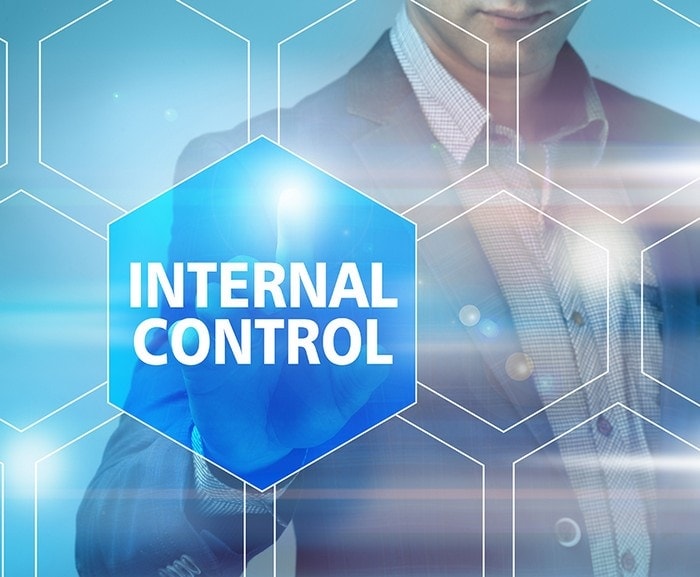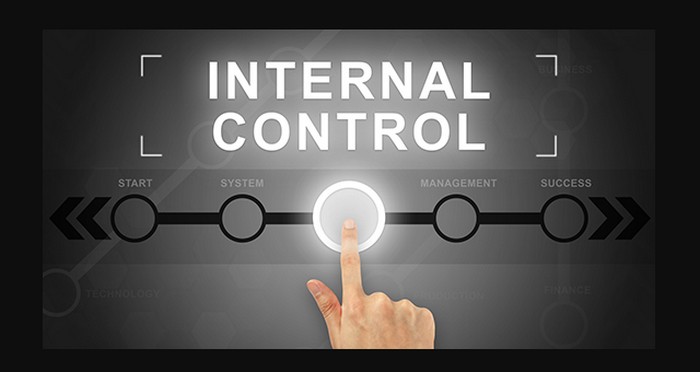Internal control can be defined as the process of accounting, auditing, reviewing the system, methods, and accounts of an organization in order to make sure that the business process of the organization is working inefficient manner and the asset and resources are being utilized in the right manner. Internal controls are conducted so that potential risks can be avoided before they take place.
The meaning of internal control is to control the system internally to ensure the smooth working of the organization. Internal controls consist of various activities which are conducted in a well-defined manner so that risk can be minimized, resources and assets can be saved from being wasted, and errors in the working process of the organization can be minimized. The purpose of internal control is not only to find out the errors in the process but also to provide guidance in order to make the work process better.
Every organization has different rules to conduct internal control. In some organizations, internal control is conducted once in a year and in some organization, internal control is conducted half-yearly or even quarterly. The internal control process is intimidating for the employees. They do their work properly because of the fear of inspection.
Internal control has limitations also, as it slows down the natural process of business in the organization which tempers the efficiency of the business. the internal control is conducted by a designated team of people, which become compulsory as the owner of the company can’t take care of everything happening in the organization. However, in small business, the internal control can be conducted by the owner of the business himself.
Table of Contents
The objective of Internal Controls
Followings are the objectives of Internal Controls:
#1 To maintain the transparency and accuracy in the financial records:
Financial records are needed to be accurate and updated to get the correct image of the financial status of the image. By conducting internal control any loopholes or theft can be caught and corrected.
#2 To run the business efficiently:
The most important purpose of conducting internal control is to ensure that the business is running smoothly. Internal controls help in mitigating the threats so that their impacts can be reduced in the long run.
#3 To get prepared accurate and timely financial statement:
Financial statements are very important and they are required to be submitted on time as they are sought after by the shareholders and investors of a company. internal controls are applied in the accounting process in order to get the accurate and timely financial statement.
#4 To control the assets and resources being wasted:
Safeguarding assets and resources are very important for an organization. Internal control should be deployed in order to make sure that they are being used properly and are not being wasted in any way.
#5 To prevent unlawful activities and theft in the organization:
Many people work in an organization. Despite various security features, it is impossible to keep eye on each and every employee in order to make sure that they are doing their job properly and they are not indulged in any kind of unlawful activities. Internal control can help in identifying such threats at the early stage and minimizes their impact on the business process of the organization and also on the image of the organization.
Who is Responsible for internal control?
The responsibility of the internal control varies from organization to organization. For example, in small businesses the responsibility of internal control lies on the shoulders of the owner of the business, whereas, in businesses of little bigger size the responsibility of internal control is also passed to the employees as the owner of the business don’t get sufficient time to conduct the internal controls.
However, in a large organization, there is a team of people who are specially employed to conduct internal control in the different departments of the organization. In a large organization, the responsibility mainly lies on the shoulders of management and board of directors.
The top manager of the organization is mainly responsible for implementing internal controls. In small organizations, top manager or owner of the business takes part in the internal control process, however, in large organizations chief manager only play the role of a leader and assign the responsibility of conducting internal control to different employees.
The manager of the organization review the reports generated by the employees assigned to carry out the process of internal control and take important decision on the basis of the output of internal control and the management is control by the board of directors. The manager is responsible to answer the board of directors and he is responsible to convey if any issue is found in the internal control process.
Board of directors takes the action if management overrides their decisions or perform their job with dishonesty.
Types of Internal Control
The type of internal control used in an organization depends on the nature and working process of the organization. It is important that companies audit process contain all processes and methods to establish an effective internal control method.
Followings are the different types of internal control.
#1 Preventive Control:
The purpose of this type of internal control is the same as its name suggest. Preventive control is conducted so that errors and anomalies can be controlled and stopped before they take place and cause any kind of damage.
#2 Detective Control:
This type of control is conducted without prior notice and the purpose of conducting this type of internal control is to find out all the anomalies and errors which already took place in the organization.
#3 Corrective Control:
As the name suggests, corrective control is conducted to find out the anomalies and errors took place in the business process and then corrective actions are taken to remove them or to correct them in order to make the business process error free again.
Components of Internal Control
#1 Monitoring and Reviewing:
The main purpose of internal control is to monitor the activities in the organization and review them periodically in order to keep the work in order. all types of activities even the activities of internal control are monitored and reviewed.
#2 Information and Communication:
Information is collected through the monitoring and auditing process and that information is passed from a lower level of management of a higher level of management and appropriate decisions are taken.
#3 Control Environment:
The main purpose behind conducting internal control process is to control the environment in the organization. In the internal control process, assessment of all activities such as organization structure, management’s working style, and philosophy, integrity to ethical values, human resources’ policies and procedures is done.
#4 Risk Assessment:
Possible risk in the business process are found and are controlled in order to prevent the damage caused by the risk.
Importance of Internal Control
Internal control is important for an organization because of the following reasons.
- The functions and processes taking place in the organization can be monitored and regulated.
- The information about the various issues, errors, and fraud, etc. can be collected and communicated to the higher management and preventive as well as corrective actions are taken to minimize the loss caused from them.
- A controlled environment is created in the organization. Where there is communication is between the management and employees and management is aware of the deeds of their employees.
Examples of Internal Control
Internal control is used in various fields. In this section, you will learn about a few examples where internal control is used.
#1 Banks:
In banks, the closing balance on the bank book should match with the closing balance in the bank statement at the end of every month. Internal control is very important in the banks, as it omits the chances of errors and bank fraud.
#2 Fixed Assets:
Fixed assets can be office equipment, vehicles, buildings, and machinery, etc. The fixed assets are not monitored regularly which increases the chances of their misplacement or being stolen.
Therefore, periodically internal control is conducted in order to keep a check on these fixed assets.
#3 Stocks:
Many organizations such as NGOs, hospitals, and police stations are required to store things like drugs, and food, etc. in order to maintain the order of goods going out of the stock and getting added, it is important that a register should be maintained.
Internal control is also conducted in such an organization in order to check if something is being stolen or misused
Liked this post? Check out the complete series on Management




NICE